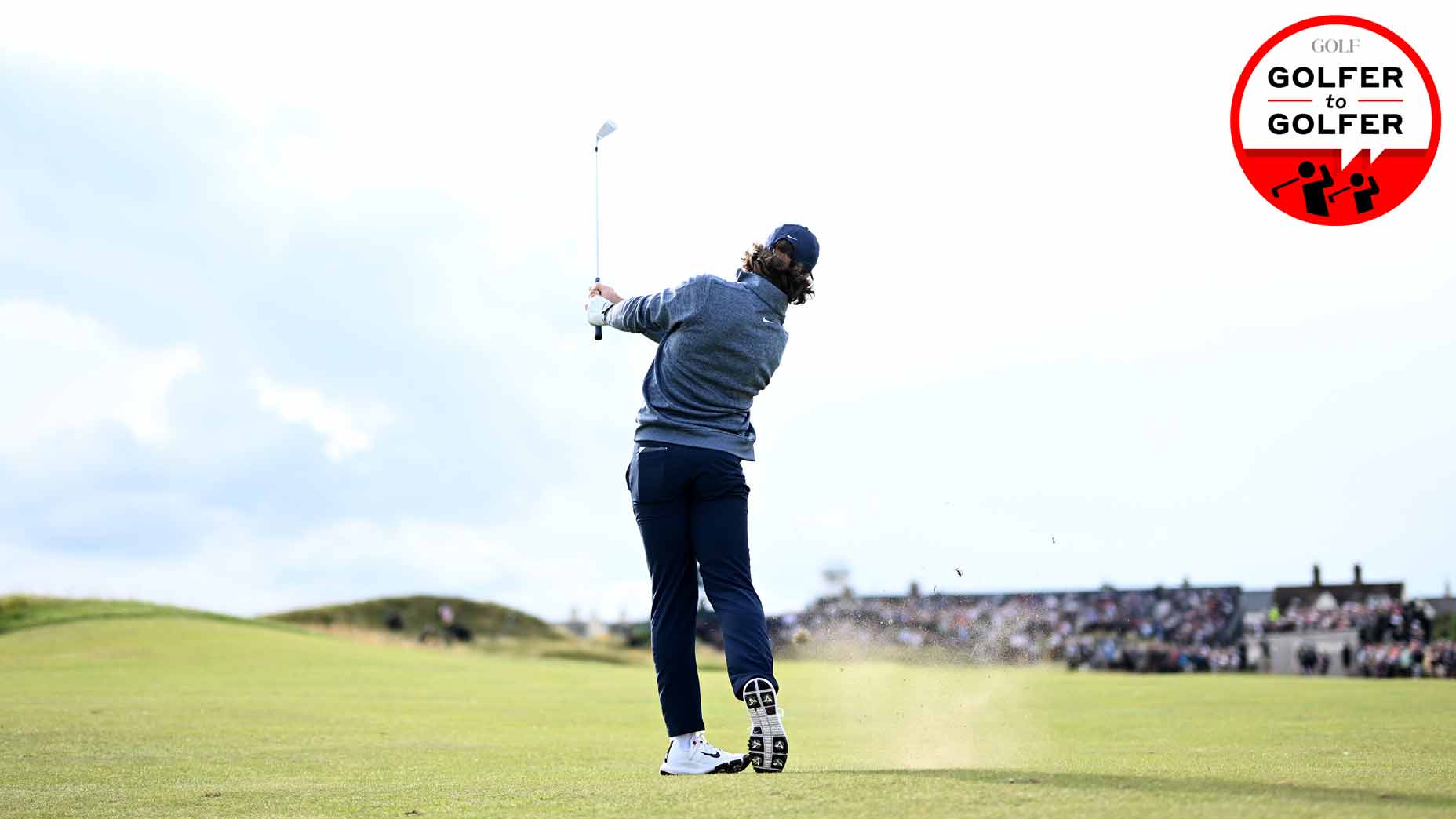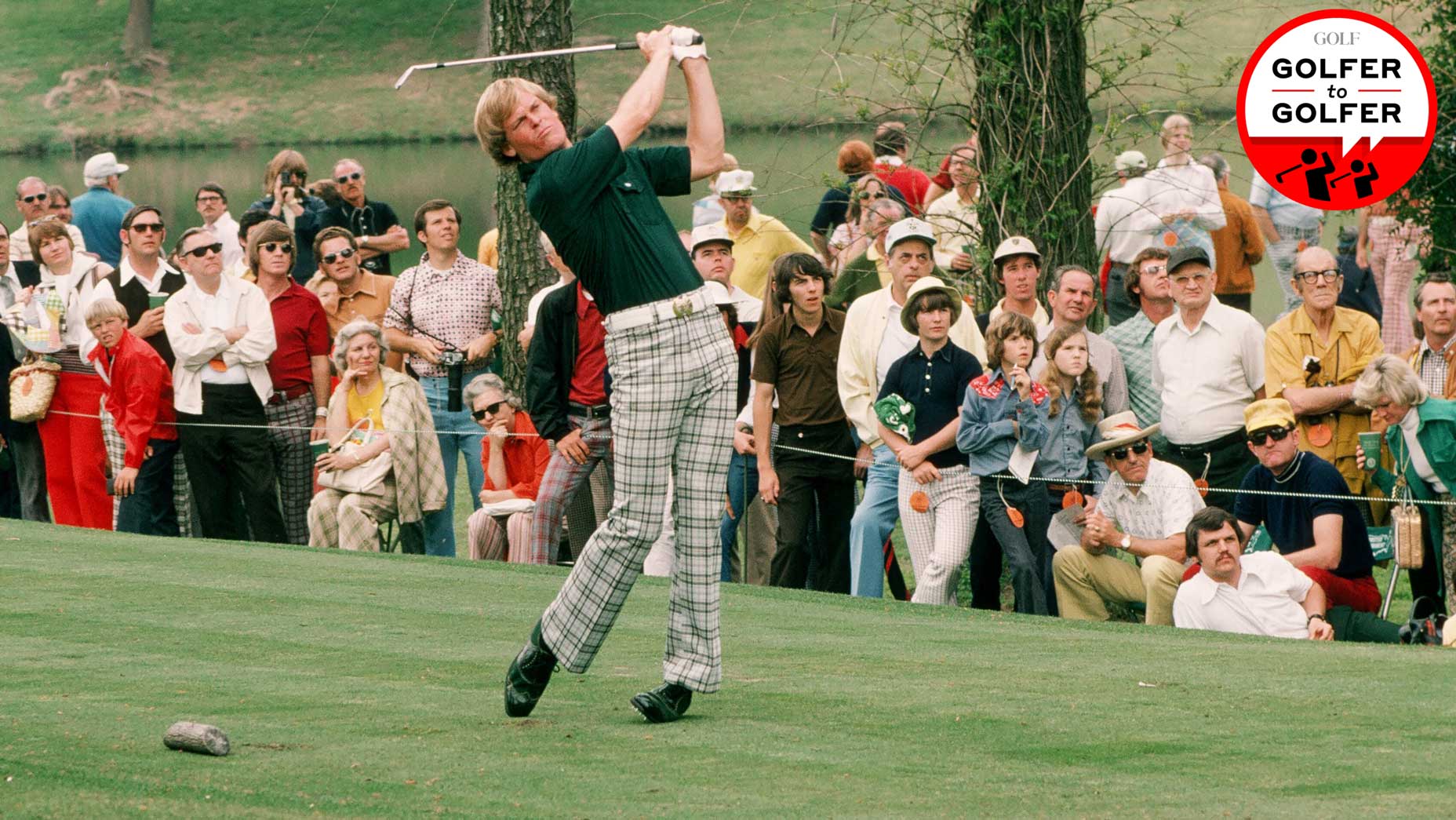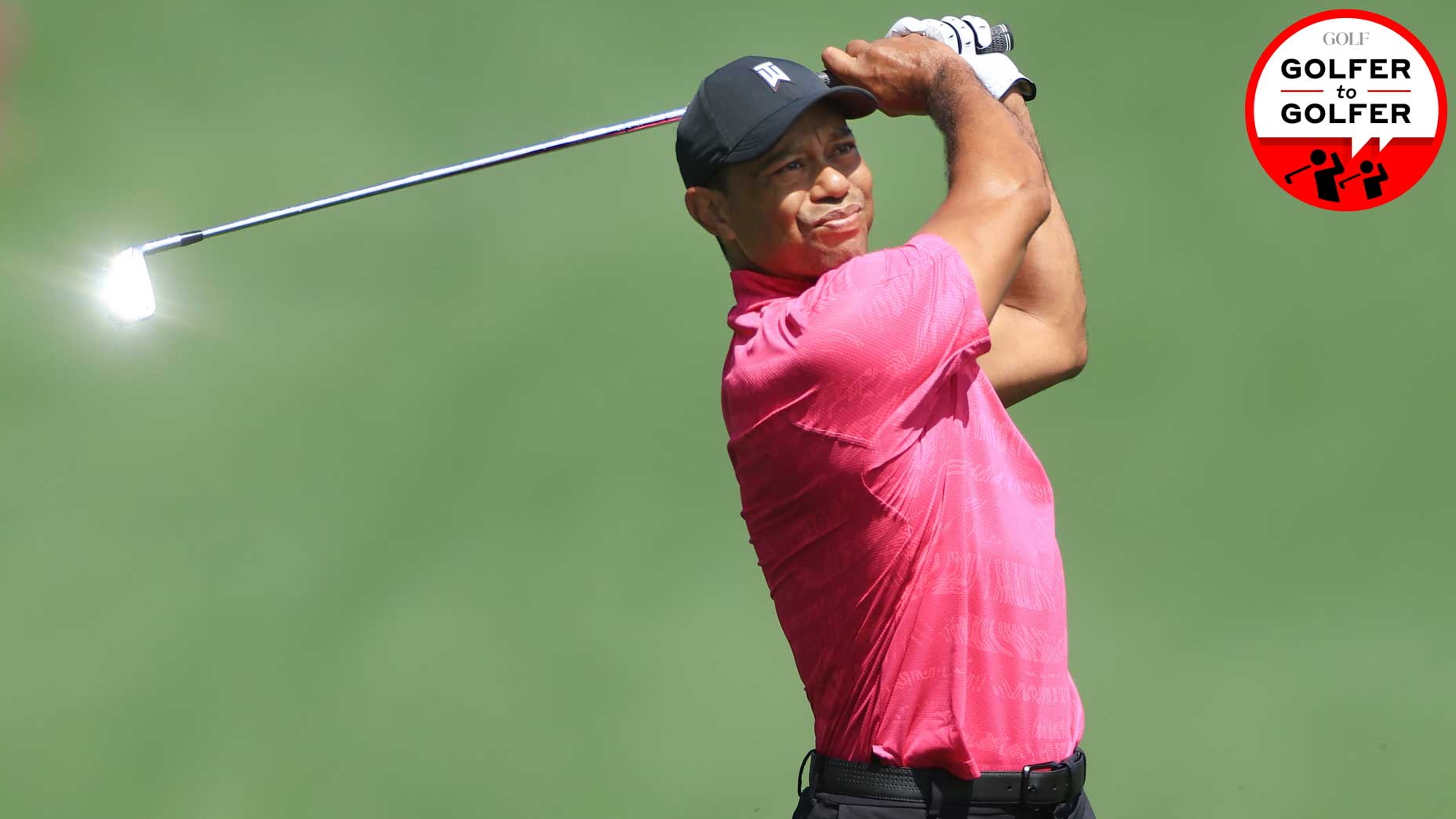Welcome to Golfer-to-Golfer, where we try to learn from all different kinds of avid players out there, in hopes that the rest of us can take away something that might improve our own games.
While hitting the driver with consistency can be difficult for many golfers, a bad tee shot can be saved with improved play elsewhere; namely with your iron shots or short game.
But what happens when you struggle with both of those aspects of your game? As many amateurs know (myself included), it can lead to long, frustrating and high-scoring rounds of golf.
This easy drill will help you hit more crisp — and powerful — iron shotsBy: Zephyr Melton
We’ve probably all been in this situation before: Standing at the driving range and seeing iron shot after iron shot just spraying all over the place, with no understanding why it’s happening. One swing can be a chunk. Another one can be grounded. Another one gets decent distance but no loft. One goes perfectly down the middle with loft and distance — but why?
For golfers struggling with the above scenario, the video below will help.
Not only will you learn how to hit a more pure iron shot, but you’ll also get more distance with irons because of it. So take a look at some of the tips below and start applying them to your next round.
Tips for getting more distance with irons
In the video above, the host, James Robinson, admits that, like so many amateur players, he struggled to hit consistent iron shots. He wasn’t maximizing his equipment, and, because of that, was lacking distance with his irons.
Says Robinson, “I could not strike good iron shots. I couldn’t get good distance. I couldn’t hit them accurately; and for me, that ruined my game.”
But Robinson provides the tips below to help discover the secret to hitting better iron shots for more distance.
Avoid getting too steep through your backswing
Robinson uses a 7-iron in the video, which he says has 34-degree loft to it. To get the most out of the club, he says players need to remember to transfer their weight properly, while avoiding getting too steep coming through the swing.
“As I go up to the top of the backswing, I want to make sure I’m loaded up on my right side — that’s simple, we all know that.
From there, I see so many golfers that slide into impact, or slide into that left side — you’re always going to get far too steep on the ball. That’s going to present a lot less dynamic loft. And, yes, we do want to present less dynamic loft, but not down in the 19, 20 degrees, because then you’re going to hit the ground with the leading edge.”

Cleveland Launcher XL Irons
Rotate
As I highlighted in a recent article, my balance is often off, which causes my swing sequence to sort of flail all over the place. By doing this, I drop my head and shoulders, and whip my hips out of place — which eliminates more distance with irons.
Robinson says too many players do something similar, and says the key is to focus on rotation through the hips.
“Once I get to the top of that backswing, instead of sliding over, instead of losing my balance and my posture, I feel like this left hip just bumps back here — so it resets the hips to level.

“As I continue down through the motions, you’ll see how this hip is massively retracted back. If it was straight over my knee and my heel., that’s a perfect place to be. Then there’s plenty of room for my handle to move forward a little bit.”
Embrace turf contact
When a golfer struggles hitting their irons, they often shy away from any turf interaction — fearing that it will lead to chunking a shot. But Robinson says to embrace turf contact, as it will help add more distance with irons.

“If we’re looking at the strike location, this tee hasn’t moved. So you can see that’s where the ball was on the tee, then we’ve got a nice shallow divot here after the shot.
“I can only do that if my body allows it to do so. If my hip moves out of the way, if I get forward shuffling, and I have a nice strike for that shot.”
By making the one simple swing adjustment that Robinson suggests above, you will see improved shots with less inconsistency. This will lead to more distance with irons, allowing for shots closer to the pin — and, hopefully, lower scores.











